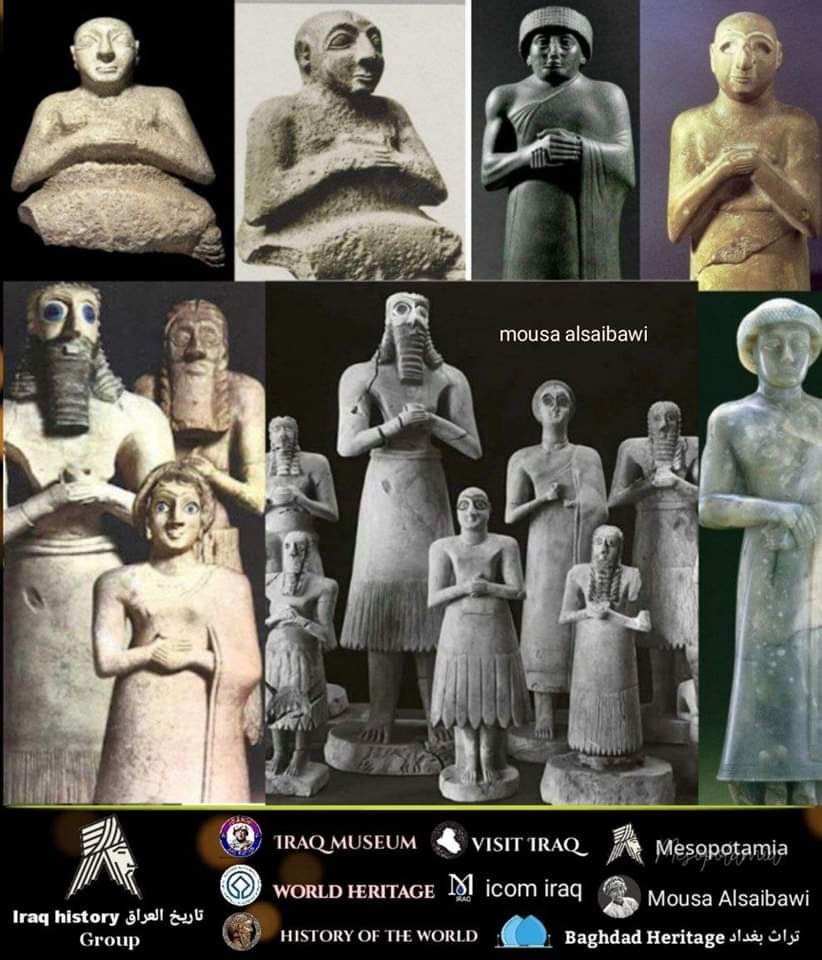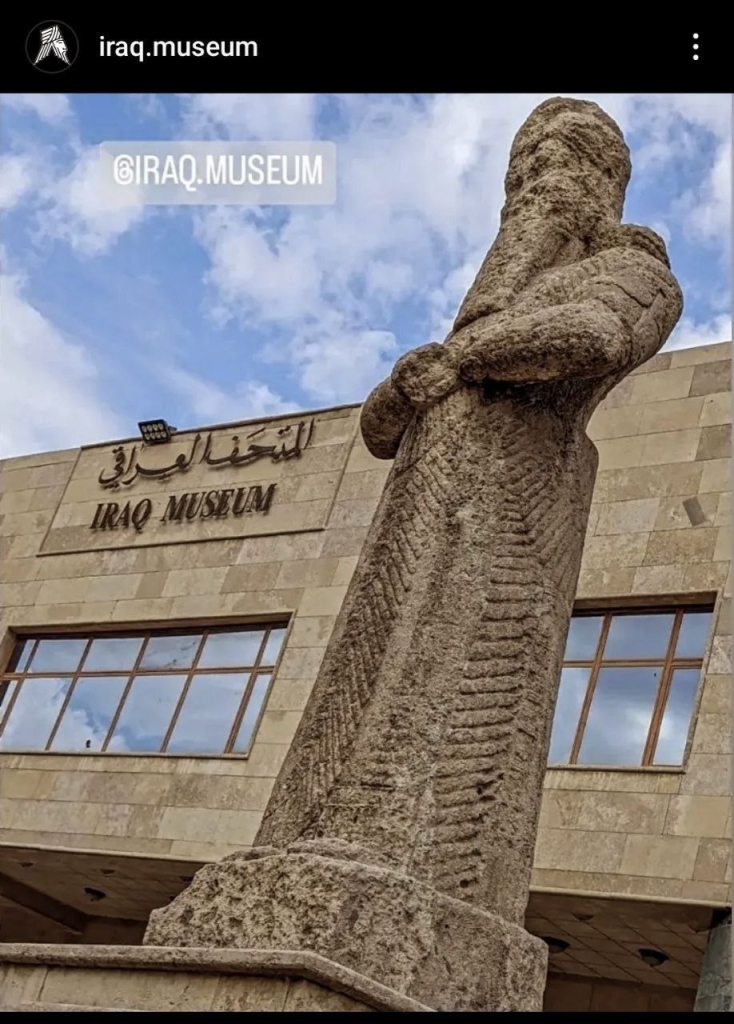Mesopotamian religion old iraq
The he religious beliefs and practices of the Sumerians and Akkadians and their successors, the Babylonians and Assyrians, form a single stream of tradition. Sumerian in origin, Mesopotamian religion was added to and subtly mod- ified by the Akkadians, whose own beliefs were in large measure assimilated to, and integrated with, those of their new environment.

As the only available intellectual framework that could provide a comprehensive understanding of the forces gov- erning existence and also guidance for right conduct in life, religion ineluctably conditioned all aspects of ancient Mesopotamian civilization. It yielded the forms in which that civilization’s social, economic, legal, political, and military institutions were, and are, to be understood, and it provided the significant symbols for poetry and art. In many ways it even influenced peoples and cultures outside Mesopotamia, such as the Elamites to the east, the Hurrians and Hittites to the north, and the Aramaeans and Jewish to the west
Influence of Mesopotamian Myths
The people of Mesopotamia relied on their gods for every aspect of their lives, from calling on Kulla, the god of bricks, to help in the laying of the foundation of a house, to petitioning the goddess Lama for protection, and so developed many tales concerning these deities. The myths, legends, hymns, prayers and poems surrounding the Mesopotamian gods and their interaction with the people introduced many of the plots, symbols and characters which modern-day readers are acquainted with such as
the story of the Fall of Man (The Myth of Adapa),
the tale of the Great Flood (The Atrahasis),
the Tree of Life (Inanna and the Hulappu Tree),
the tale of a wise man/prophet taken up to heaven (The Myth of Etana),
the story of creation (The Enuma Elish),
the quest for immortality (The Epic of Gilgamesh),
the Dying and Reviving god figure (a deity who dies or goes into the underworld and returns to life or the surface of the world to in some way benefit the people) who is famously depicted through Inanna’s Descent to the Underworld.
These tales, among many others, became the basis for later myths in the regions the Mesopotamians traded and interacted with, most notably the land of Canaan (Phoenicia) whose people, in time, would produce the narratives which now comprise the scriptures known as the Old and New Testaments of the Bible
In ancient Mesopotamia, the meaning of life was for one to live in concert with the gods. Humans were created as co-laborers with their gods to hold off the forces of chaos and to keep the community running smoothly
Mesopotamian Creation Myth
According to the Mesopotamian creation myth, the Enuma Elish, (meaning,’When on High’) life began after an epic struggle between the elder gods and the younger. In the beginning there was only water swirling in chaos and undifferentiated between fresh and bitter. These waters separated into two distinct principles: the male principle, Apsu, which was fresh water and the female principle, Tiamat, salt water. From the union of these two principles all the other gods came into being
Every city had, as its center, the temple of the patron god of that city. The most famous holy city was Nippur where the god Enlil legitimized the rule of kings and presided over pacts. So important a center was Nippur that it survived, intact, into the Christian and then the Muslim periods and continued, until 800 CE, as an important religious center for those new faiths.

Photo by Abdullah Sh Marafi
The statue of the god according to religious beliefs in ancient Iraq Nabu, the god of wisdom and writing, and there are many personal names bearing the name Nabu. He is the son of Marduk, the God of Babylon and a shepherd.
The gods could even visit each other on occasion as in the case of the god Nabu whose statue was carried once a year from Borsippa to Babylon to visit his father Marduk. Marduk, himself, was honored greatly in this same way at the New Year Festival in Babylon when his statue was carried out of the temple, through the city, and to a special little house outside the city walls where he could relax and enjoy some different scenery. Throughout this procession, the people would chant the Enuma Elish in honor of Marduk’s great victory over the forces of chaos.
Our Sources :
History Begins at Sumer (Philadelphia, 1956), Thirty Nine Firsts in Recorded History, by Samuel Noah Kramer, in 404 searchable pdf pages.
Selected Writings of Samuel Noah Kramer, in 570 bookmarked and searchable pdf pages.
Green، M.W. (1981). “The Construction and Implementation of the Cuneiform Writing System
Samuel Noah Kramer University of Pennsylvania Press, 1972 – History – 130 pages
- Kramer, Samuel Noah (1944). Sumerian Mythology: A Study of Spiritual and Literary Achievement in the Third Millennium B.C. American Philosophical Society. Revised edition: 1961.
- Kramer, Samuel Noah (1981). History Begins at Sumer: Thirty-Nine Firsts in Man’s Recorded History (3 ed.). University of Pennsylvania Press. I. First edition: 1956 (Twenty-Five Firsts). Second Edition: 1959 (Twenty-Seven Firsts).
- Kramer, Samuel Noah (1963). The Sumerians: Their History, Culture, and Character Samuel Noah Kramer (PDF). University of Chicago Press.
- Kramer, Samuel Noah (1967). Cradle of Civilization: Picture-text survey that reconstructs the history, politics, religion and cultural achievements of ancient Sumer, Babylonia and Assyria. Time-Life: Great Ages of Man: A History of the World’s Cultures..
- Wolkstein, Diane; Kramer, Samuel Noah (1983). Inanna, Queen of Heaven and Earth: Her Stories and Hymns from Sumer. New York: Harper & Row.
- Kramer, Samuel Noah (1988a). In the World of Sumer: An Autobiography. Wayne State University Press
- Babylon: Mesopotamia and the Birth of Civilization. Paul Kriwaczek.
Ancient Mesopotamia. Leo Oppenheim.
Ancient Mesopotamia: This History, Our History. University of Chicago.
Mesopotamia 8000-2000 B.C. Metropolitan Museum of Art.
30,000 Years of Art. Editors at Phaidon. - Treasures of the Iraq Museum Faraj Basmachi Ministry of Information, 1976 – Art, Iraqi – 426 pages
- Algaze, Guillermo, 2008 Ancient Mesopotamia at the Dawn of Civilization: the Evolution of an Urban Landscape. University of Chicago Press
- Atlas de la Mésopotamie et du Proche-Orient ancien, Brepols, 1996
- Bottéro, Jean; 1987. (in French) Mésopotamie. L’écriture, la raison et les dieux, Gallimard, coll. « Folio Histoire »,
- Edzard, Dietz Otto; 2004. Geschichte Mesopotamiens. Von den Sumerern bis zu Alexander dem Großen, München,
- Hrouda, Barthel and Rene Pfeilschifter; 2005. Mesopotamien. Die antiken Kulturen zwischen Euphrat und Tigris. München 2005 (4. Aufl.),
- Joannès, Francis; 2001. Dictionnaire de la civilisation mésopotamienne, Robert Laffont.
- Korn, Wolfgang; 2004. Mesopotamien – Wiege der Zivilisation. 6000 Jahre Hochkulturen an Euphrat und Tigris, Stuttgart,
- Matthews, Roger; 2005. The early prehistory of Mesopotamia – 500,000 to 4,500 BC, Turnhout 2005,
- Oppenheim, A. Leo; 1964. Ancient Mesopotamia: Portrait of a dead civilization. The University of Chicago Press: Chicago and London. Revised edition completed by Erica Reiner, 1977.
- Pollock, Susan; 1999. Ancient Mesopotamia: the Eden that never was. Cambridge University Press: Cambridge.
- Postgate, J. Nicholas; 1992. Early Mesopotamia: Society and Economy at the dawn of history. Routledge: London and New York.
- Roux, Georges; 1964. Ancient Iraq, Penguin Books.
- Silver, Morris; 2007. Redistribution and Markets in the Economy of Ancient Mesopotamia: Updating Polanyi, Antiguo Oriente
- Pingree, David (1998). “Legacies in Astronomy and Celestial Omens”. In Dalley, Stephanie (ed.). The Legacy of Mesopotamia. Oxford University Press.
- Stager, L. E. (1996). “The fury of Babylon: Ashkelon and the archaeology of destruction”. Biblical Archaeology Review. 22 (1).
- Stol, Marten (1993). Epilepsy in Babylonia. Brill Publishers.
- Louvre Museum
- Vatican Museums
- British Museum
- Metropolitan Museum of Art
- Rijksmuseum
- Ashmolean Museum
- Cleveland Museum of Art
- Art Institute of Chicago
- Field Museum of Natural History


